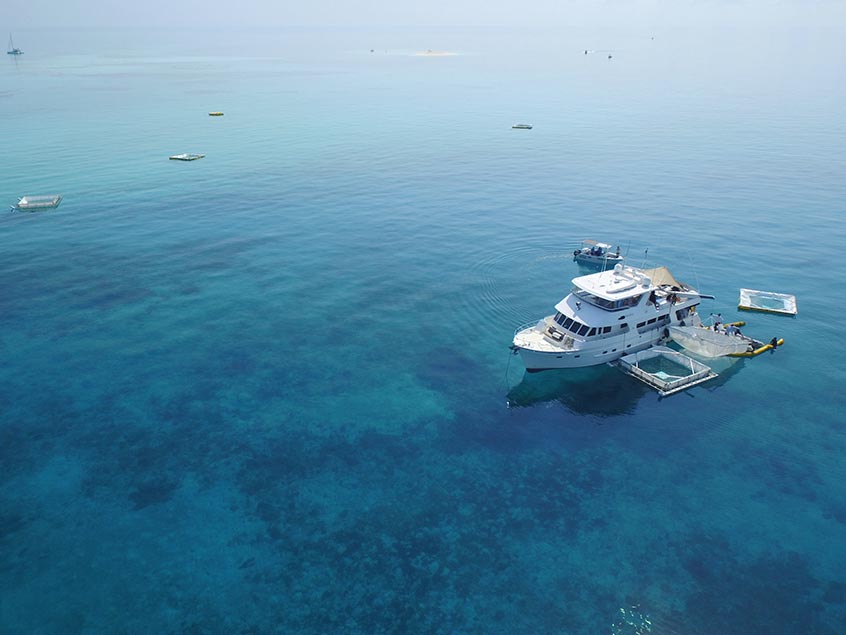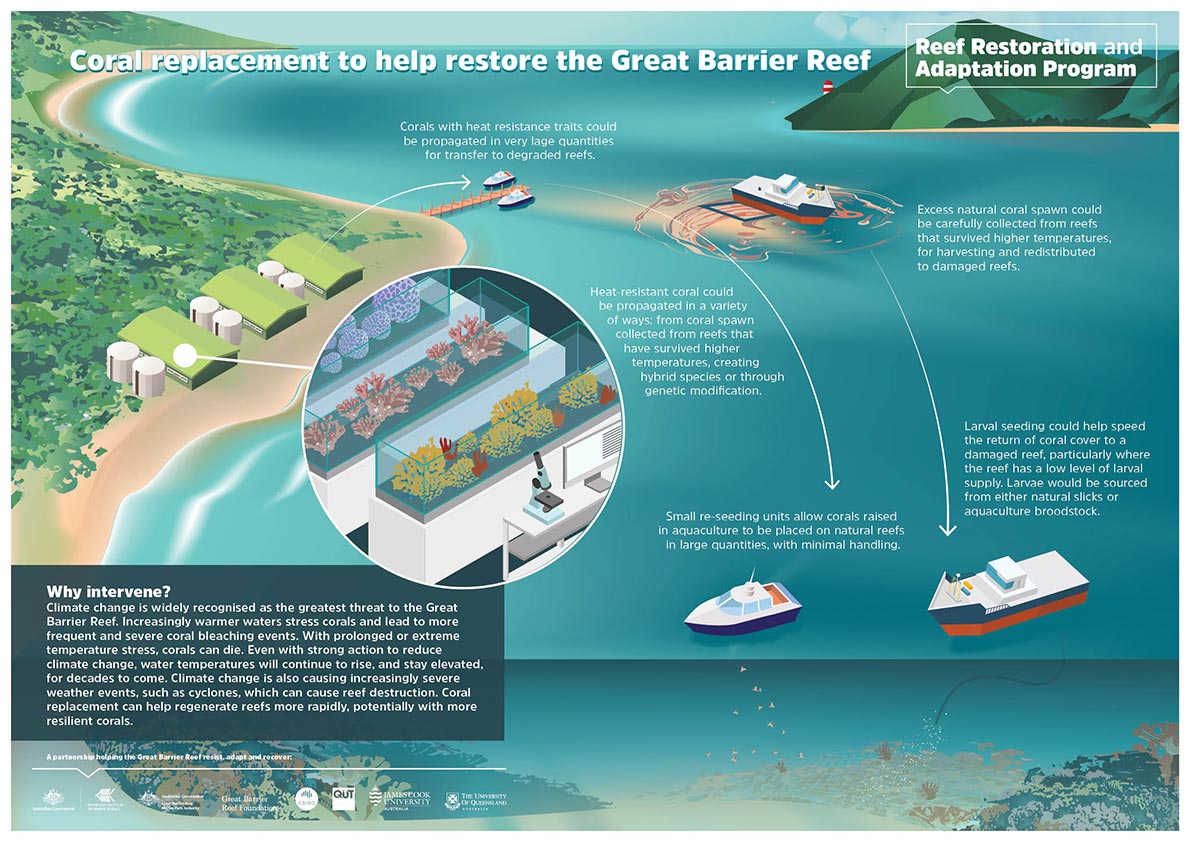Coral seeding by assisted larval movement

Caption: Larval restoration trials. Photo: Ross Miller.
Functional objective:
Enhance coral reproduction and recruitment on recovering reefs, following disturbance
Delivery method:
Assisted larval movement
Deployment scale:
Small (a few hectares, a single reef) to medium (20 or more reefs)
Subprogram:
Coral seeding aims to speed the return of coral cover to a disturbed or damaged reef by increasing the number of available coral larvae for natural settlement, particularly where the reef has a low larval supply (e.g. following a large-scale bleaching event).
This potential intervention involves collecting natural, seasonally-produced coral spawn/larval slicks in floating enclosures and towing them short distances to adjacent, high-priority areas for release. The aim is to increase the number of corals from the spawning slick that ultimately recruit into reef populations.
This technique has been successfully trialled on small scales.
Harvesting wild coral larval slicks is likely to have a minimal negative impact on Reef ecology, as the mortality rate of the larvae in a slick is typically high.
Compared with re-seeding just a few species, it offers the potential to capture a diverse range of species and allow the re-establishment of reef communities.
While coral spawn naturally travels long distances between reefs, relocating wild corals would require measures to ensure the introduced corals did not harm the local population.







